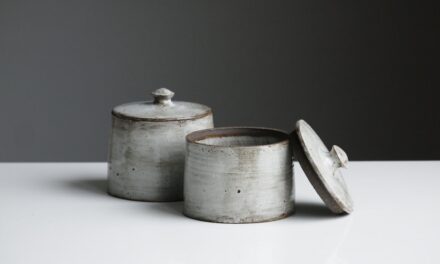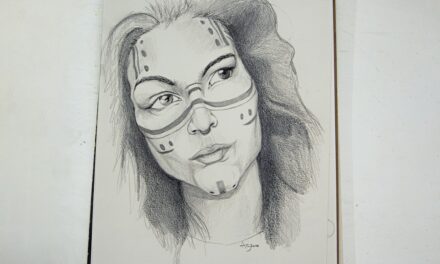Lithography, a printing technique that utilises the immiscibility of oil and water, has a rich and fascinating history that dates back to the late 18th century. The process was invented in 1796 by the German playwright Alois Senefelder, who sought a method to reproduce his texts without the need for traditional engraving or woodblock printing. Senefelder’s initial experiments involved using a limestone slab and a greasy crayon to draw images, which he then treated with a chemical solution to create a printing surface.
This innovative approach allowed for the production of multiple copies from a single stone, revolutionising the way images and texts were disseminated. As lithography gained popularity, it quickly spread across Europe and beyond, becoming a preferred method for artists and publishers alike. By the early 19th century, lithography was being used not only for printing books and newspapers but also for creating fine art prints.
The technique allowed artists to produce works that retained the spontaneity of drawing while enabling them to reach a wider audience. Notable figures such as Eugène Delacroix and Francisco Goya embraced lithography, using it as a medium to express their artistic visions. The invention of the lithographic press further enhanced the process, making it more efficient and accessible, thus solidifying lithography’s place in the history of printmaking.
Summary
- Lithography was invented in 1796 by Alois Senefelder in Germany, and it revolutionised the printing industry.
- The key materials and tools for lithography include a smooth stone or metal plate, grease-based crayons or ink, and a printing press.
- The process of lithography involves creating an image on the stone or plate using grease-based materials, then chemically treating the surface to fix the image.
- Creating a lithograph involves transferring the image from the stone or plate onto paper using a printing press.
- Different types of lithography include traditional stone or plate lithography, offset lithography, and photolithography used in microelectronics.
Materials and Tools for Lithography
The materials and tools used in lithography are integral to the success of the process. At its core, lithography relies on a flat surface, traditionally a slab of limestone, although modern practitioners often use metal plates or synthetic materials. The choice of substrate can significantly affect the final print’s quality and texture.
Limestone is prized for its smoothness and ability to hold fine details, while metal plates offer durability and ease of handling. Synthetic materials, such as polyester or rubber, have also emerged as popular alternatives due to their lightweight nature and resistance to wear. In addition to the substrate, lithographers require specific tools to create their images.
The most essential tool is the lithographic crayon or pencil, which contains a greasy substance that adheres to the stone or plate. These drawing instruments come in various hardness levels, allowing artists to achieve different line qualities and textures. Other important tools include brushes for applying ink, rollers for inking the surface evenly, and a press for transferring the image onto paper.
The choice of ink is also crucial; lithographic inks are typically oil-based and designed to adhere well to the greasy image while repelling water. The combination of these materials and tools enables artists to explore a wide range of techniques and styles within the lithographic medium.
The Process of Lithography

The lithographic process is characterised by its reliance on chemical principles rather than mechanical ones, setting it apart from other printing methods. The first step involves preparing the stone or plate by grinding its surface to create a smooth texture. Once prepared, the artist draws their image directly onto the surface using a lithographic crayon or pencil.
This initial drawing is crucial, as it establishes the areas that will retain ink during printing. After the image is complete, the next phase involves treating the surface with a chemical solution that helps to fix the drawing. This solution typically contains gum arabic and an acid, which creates a hydrophilic (water-attracting) layer around the non-image areas while leaving the drawn areas hydrophobic (water-repelling).
Once this treatment is applied, the artist can begin inking the stone or plate. The ink is rolled onto the surface, adhering only to the greasy image while being repelled by the wet non-image areas. Finally, paper is placed on top of the inked surface, and pressure is applied using a lithographic press to transfer the image onto the paper.
This process can be repeated multiple times to create editions of prints.
Creating a Lithograph
Creating a lithograph is an intricate process that requires both technical skill and artistic sensibility. The journey begins with selecting an appropriate stone or plate, which should be free from imperfections that could affect the final print quality. Once chosen, the artist prepares the surface meticulously by grinding it down to achieve a smooth finish.
This preparation is vital, as any irregularities can lead to unwanted marks or distortions in the printed image. With the surface ready, the artist begins drawing their design using lithographic crayons or pencils. This stage allows for great freedom of expression; artists can create intricate details or bold strokes depending on their style.
After completing the drawing, they apply a chemical solution to fix the image and prepare it for inking. The inking process requires careful attention; artists must ensure an even application of ink while avoiding excess that could muddy the details. Once inked, they place dampened paper onto the stone or plate and run it through a press.
The pressure transfers the ink from the surface onto the paper, resulting in a print that captures the nuances of the original drawing.
Different Types of Lithography
Lithography has evolved into various forms over time, each with its unique characteristics and applications. One prominent type is offset lithography, which has become one of the most widely used printing methods in commercial printing today. In offset lithography, an intermediate rubber blanket transfers ink from the plate to paper rather than direct contact between plate and paper.
This method allows for high-speed production and excellent image quality, making it ideal for printing books, magazines, and packaging. Another significant variation is stone lithography, which adheres closely to Senefelder’s original technique using limestone slabs. Artists favour this method for its ability to produce rich textures and subtle tonal variations.
Additionally, there is photolithography, which employs photographic processes to create images on light-sensitive plates. This technique is prevalent in semiconductor manufacturing and microfabrication due to its precision in transferring intricate designs onto surfaces. Furthermore, there are variations like digital lithography that combine traditional techniques with modern technology.
Digital lithography allows artists to create images digitally before transferring them onto lithographic plates using computer-controlled processes. This fusion of old and new opens up exciting possibilities for contemporary artists while maintaining the essence of lithographic printmaking.
Famous Lithographers and their Works

Throughout history, numerous artists have made significant contributions to lithography, elevating it as a respected art form. One such figure is Henri de Toulouse-Lautrec, whose vibrant posters captured the essence of Parisian nightlife in the late 19th century. His use of bold colours and dynamic compositions revolutionised commercial art and showcased lithography’s potential for mass communication.
Another notable lithographer is Kathe Kollwitz, whose poignant works often addressed themes of social injustice and human suffering. Kollwitz’s mastery of line and texture allowed her to convey deep emotional resonance through her prints. Her series “The Weavers” exemplifies her ability to blend artistic expression with political commentary, making her one of the most influential figures in 20th-century printmaking.
In addition to these historical figures, contemporary artists continue to push the boundaries of lithography. Artists like Robert Rauschenberg have incorporated lithographic techniques into mixed media works, demonstrating how traditional methods can coexist with modern artistic practices. Rauschenberg’s innovative approach has inspired countless artists to explore new possibilities within lithography while honouring its rich heritage.
Contemporary Applications of Lithography
In today’s world, lithography extends beyond fine art into various contemporary applications across multiple industries. One significant area is commercial printing, where offset lithography dominates due to its efficiency and cost-effectiveness for large print runs. Businesses rely on this method for producing everything from brochures to packaging materials, benefiting from its ability to deliver high-quality images at scale.
Moreover, lithography plays a crucial role in electronics manufacturing through photolithography techniques used in semiconductor fabrication. This process allows for precise patterning on silicon wafers essential for producing integrated circuits found in modern electronic devices. As technology advances, innovations in photolithography continue to drive miniaturisation and increased performance in electronic components.
Additionally, artists today are exploring new avenues within lithography by integrating digital technologies into their practice. Digital lithography enables artists to create intricate designs using software before transferring them onto traditional plates or stones. This blending of techniques not only expands creative possibilities but also attracts a new generation of artists interested in printmaking.
Tips for Beginners in Lithography
For those embarking on their journey into lithography, several tips can help ease the learning curve and enhance their experience with this intricate art form. First and foremost, understanding the chemistry behind lithography is essential; familiarising oneself with how different materials interact will lead to better results. Beginners should experiment with various substrates—such as limestone versus synthetic plates—to discover which best suits their style.
Practising drawing skills is equally important; since lithography relies heavily on line work and texture, honing these abilities will significantly impact print quality. Beginners should start with simple designs before progressing to more complex compositions as they gain confidence in their technique. Additionally, patience is key when working with lithography; each step requires careful attention to detail—from preparing surfaces to applying ink evenly.
Taking time during each phase will yield more satisfying results in prints. Finally, seeking feedback from experienced lithographers or joining workshops can provide invaluable insights into refining one’s skills and understanding this captivating medium more deeply. By immersing oneself in both theory and practice while remaining open to experimentation, beginners can cultivate their unique voice within the world of lithography—a medium rich with history yet brimming with contemporary relevance.
For those intrigued by the fascinating world of lithography, a deeper exploration into specific artists who excelled in this technique can be quite enlightening. A recommended read is An Introduction to the Painting ‘Ecce Homo’ c. 1849-1852 by Honoré Daumier. This article delves into the work of Daumier, who was not only a master painter but also a prolific lithographer. His adept use of lithography to convey powerful social and political commentary showcases the versatility and expressive potential of this art form. This related exploration will provide a richer understanding of how lithography has been employed by artists to enhance their artistic expressions.




